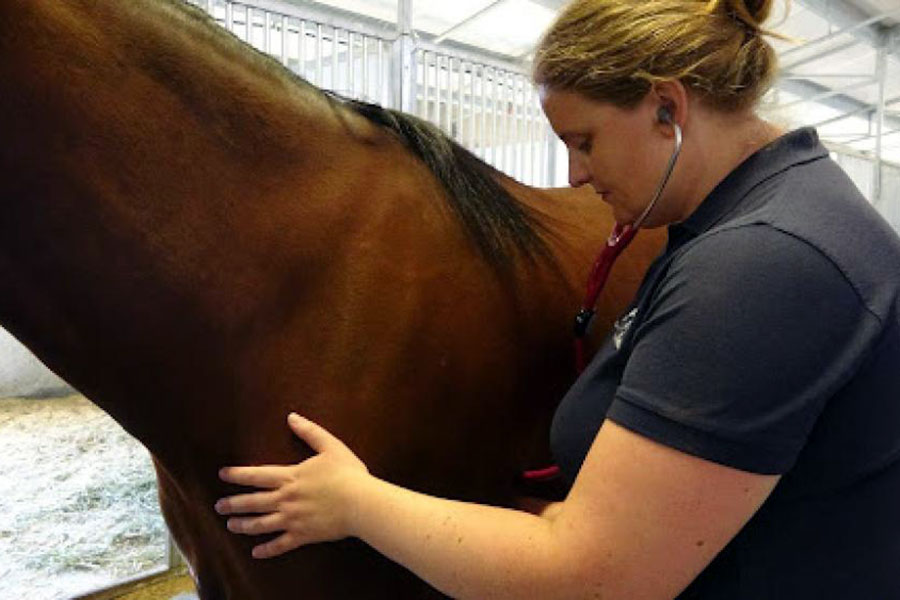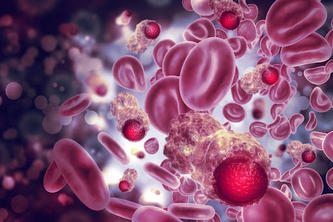
When Assistant Professor Sian Durward-Akhurst, Department of Veterinary Clinical Sciences, heard about the death of Practical Move, the thoroughbred racehorse who was a contender at the 2023 Breeder’s Cup, she was crushed. Beyond the tragedy of his individual death is that it wasn’t unusual. About 1.3 horses die for every thousand race starts, roughly 400 racehorses per year. Many of those deaths remain a mystery—and it’s that mystery that drives Durward-Akhurst’s research.
Growing up in England, Durward-Akhurst always wanted to be a veterinarian, but during veterinary school at the University of Glasgow and an internship at the Royal Veterinary College, she developed a passion for equine cardiology that led her to the U.S., where she saw the greatest opportunity to gain clinical experience.
She arrived at the University of Minnesota in July 2012 to complete her residency and master’s degree, during which she investigated the genetic basis of a highly debilitating muscle disease in Quarter Horses. Her work led to the development of a genetic test for the disease, which is now called myosin heavy chain myopathy.
“A genetic test is non-invasive and relatively affordable, and this test allows owners to understand their horse's risk of developing myosin heavy chain myopathy and to implement preventative measures,” she says. “This research really highlighted the importance of genetics for me, and that is why I decided to stay on at the U of M to do a PhD in comparative genetics.”
One of primary issues she examines through the lens of genetics is sudden cardiac death (SCD). SCD is responsible for about 20 percent of racehorse deaths, though about half never receive a formal diagnosis. The most challenging cases are thought to stem from an arrhythmia, or an irregular heartbeat.
“It sounds a bit like balls in a tumble dryer,” Durward-Akhurst says. “When the electrical activity of the heart happens, it needs to be in a very precise order. With arrhythmias, that gets disrupted—so the signal is bouncing around but not doing the circuit it’s supposed to do.”
This means that blood isn’t pumped as it should be—or sometimes at all.
But because many arrhythmias aren’t caused by any structural problems in the heart, there’s no way to predict when or if a horse might be affected. “When you listen to or image these hearts, they’re normal. Many have normal ECGs until they go into a fatal arrhythmia,” Durward-Akhurst says. Like Practical Move, “Most of these horses are completely fine until they're not fine.”
Her vision is that a combination of genetic testing and ECGs will enable diagnosis of potentially fatal arrhythmia before it becomes a problem.
To do this, Durward-Akhurts is collecting genetic samples from racetracks around the country to find common genetic markers among horses who died of SCD. So far, she’s received and sequenced 60 samples, including from Medina Spirit, the winner of the 2021 Kentucky Derby who died shortly after of SCD.
Finding markers that determine a horse’s level of risk would help to develop a plan for how frequently a horse should be monitored and other precautions that should be taken.
Durward-Akhurst’s work has significant implications for humans as well. “I’m super passionate about horses and improving health and our ability to determine which ones will have problems,” she says. “But there’s also a translational aspect—racehorses are actually a great model for human disease."
Durward-Akhurst credits the strength of the research programs at the College of Veterinary Medicine and its Equine Genetics and Genomics Lab for giving her the resources and preparing her to tackle big problems.
This story was adapted from the original at the College of Veterinary Medicine.




